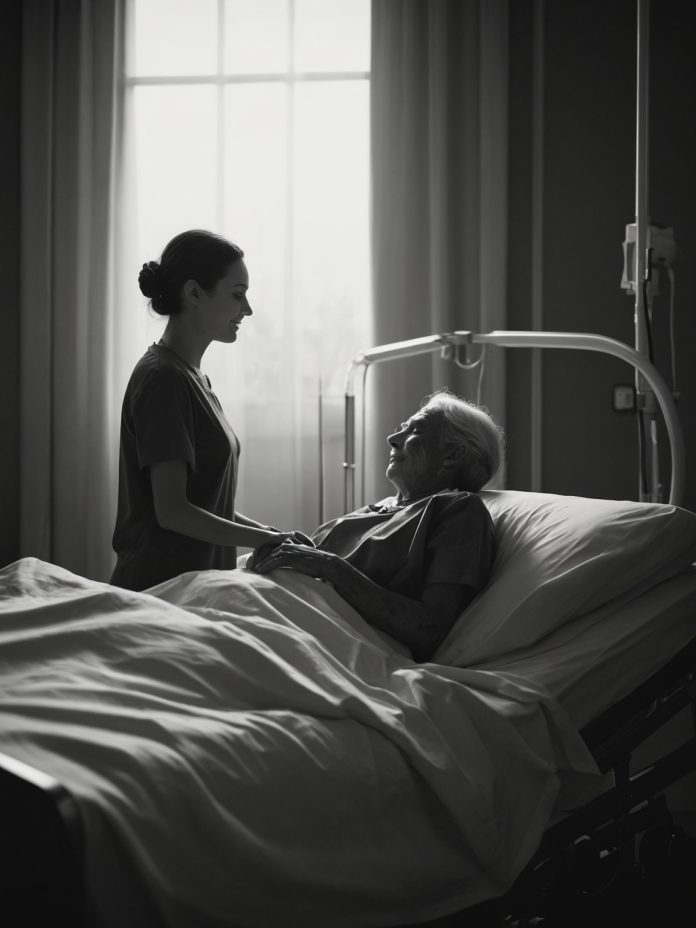This article goes beyond the basics of PVS. It acknowledges the emotional toll and offers guidance for navigating the complex web of medical care, legal considerations, and personal values. You’ll find real-life stories and resources to help you make the best decisions for your loved one.
TL;DR
- Understand the difference between PVS and disability.
- Make informed choices about compassionate care.
- Explore the value of every human life and respecting wishes.
- Find support and resources for navigating this challenging time.
No one wants to imagine a loved one in a permanent vegetative state (PVS), a condition where they can’t interact with their surroundings or experience life as we know it. It’s a deeply emotional topic, and navigating the best course of action can feel overwhelming. So, let’s explore the factors involved in making these complex decisions.
Understanding Permanent Vegetative State vs. Disability

The first step is understanding PVS itself. It’s important to distinguish it from other conditions. Someone who needs help with daily activities like eating, dressing, or showering isn’t necessarily in a PVS. They may have a disability but still retain consciousness and awareness. PVS, on the other hand, is a severe brain injury that leaves a person in a state where they can’t think, feel, or respond to their environment. Brain scans and other diagnostic tests can help healthcare professionals determine if someone is in a PVS.
Making Medical Choices with Compassion

In most cases, extensive medical intervention isn’t used to keep someone in a PVS alive. The focus shifts to comfort and compassionate care. However, there are situations where families may hold onto hope for recovery, especially if the diagnosis is uncertain. This was the case with Terri Schiavo, whose family believed she wasn’t in a permanent vegetative state. Here, it’s important to remember that denial is a natural part of the grieving process. Families facing this situation need compassion and support from medical professionals, social workers, and grief counselors.
The Value of Every Life and Respecting Wishes

One important consideration is the inherent value of human life. We all age, and some of us may eventually require help with daily activities. This reinforces the idea that even those with severe impairments deserve respect and care. Many cultures and religions place a high value on preserving life at all costs.
However, this doesn’t mean forcing someone to live when their condition offers no hope of recovery. Many countries have legalized advance directives, which allow people to document their wishes for medical care in case they become incapacitated. These documents can be invaluable in guiding difficult decisions. In the absence of an advance directive, families are often left to make agonizing choices that reflect their loved one’s values and beliefs, while also considering their quality of life.
Recent Real-Life Events and the Permanent Vegetative State Debate
The article explores the complexities of caring for someone in a permanent vegetative state (PVS) and the ethical considerations involved. Here are some recent real-life events that highlight this ongoing debate:
- Right to Die Laws: In 2021, Brittany Maynard, a 29-year-old woman diagnosed with terminal brain cancer, moved to Oregon to utilize the state’s Death with Dignity Act. With the help of her doctor, she obtained medication to end her life on her own terms [1]. This case reignited discussions about patient autonomy and the right to refuse life-sustaining treatments, even if not in the context of PVS specifically.
- Terri Schiavo Case (1990-2005): This highly publicized case involved Terri Schiavo, a woman who suffered brain damage after collapsing in 1990. Her husband sought to remove her feeding tube, arguing she was in a PVS with no hope of recovery. Her parents disagreed, believing there was a chance for improvement. The legal battle went all the way to the US Supreme Court, which ultimately upheld the removal of the feeding tube [2]. This case brought national attention to the ethical and legal issues surrounding PVS and end-of-life care.

Table: Distinguishing Permanent Vegetative State from Disability
| Feature | Permanent Vegetative State (PVS) | Disability |
|---|---|---|
| Consciousness | No awareness of surroundings | Alert and conscious |
| Thought | Cannot think or reason | Can think and reason |
| Response | No response to stimuli | May respond to stimuli, though may be limited |
| Brain Function | Severe brain injury with significant damage | May have varying degrees of brain or physical impairment |
Sources:
- [1] Brittany Maynard – Death with Dignity National Center: https://people.com/celebrity/terminally-ill-woman-brittany-maynard-has-ended-her-own-life/
- [2] Terri Schiavo case – Wikipedia: https://en.wikipedia.org/wiki/Terri_Schiavo_case
Finding Support and Resources

Making decisions about care for someone in a PVS is incredibly difficult. If you’re facing this situation, it’s crucial to seek guidance from a team of medical professionals, social workers, and grief counselors. They can provide you with the information and support you need to navigate this challenging time.
Here are some additional resources that can be helpful:
- The National Institute of Neurological Disorders and Stroke (https://www.ninds.nih.gov/) offers information about PVS and other neurological conditions.
- The National Hospice and Palliative Care Organization (https://www.nhpco.org/) can connect you with resources for end-of-life care, including pain management and emotional support.
- Support groups for families facing similar challenges can provide invaluable emotional support. These groups can be found online or through local hospitals and hospices.
By taking the time to learn more, gather support, and consider all your options, you can make the best possible choices for your loved one during this difficult time. Remember, you’re not alone. There are resources available to help you through this.





